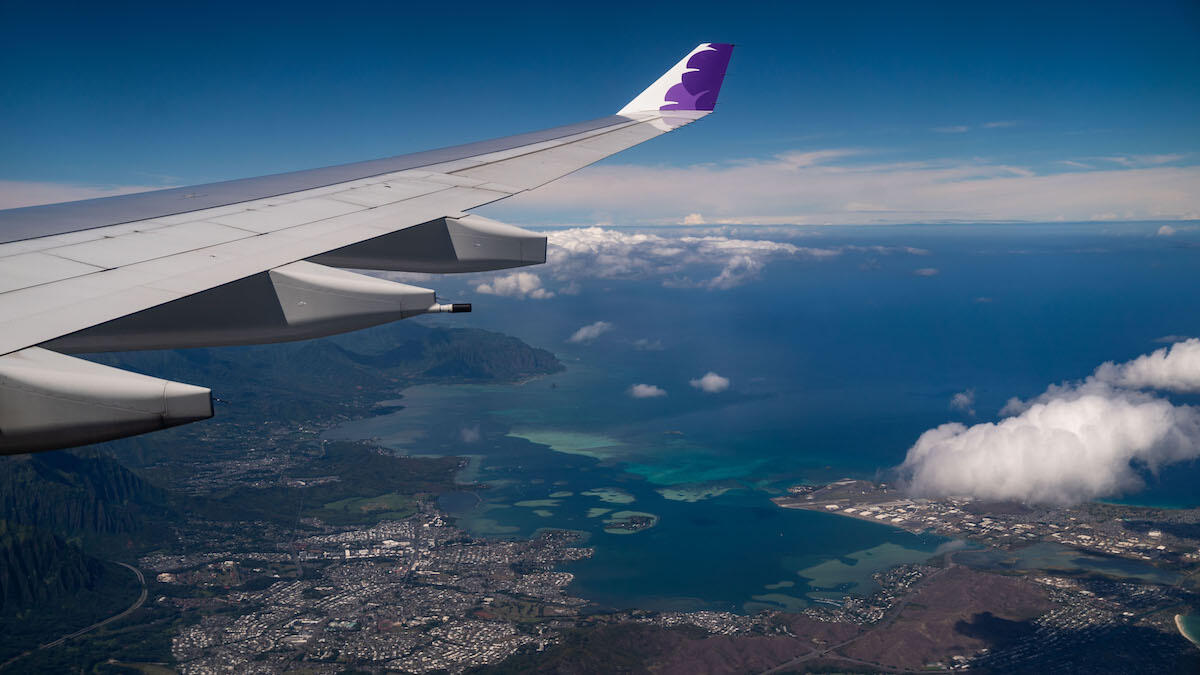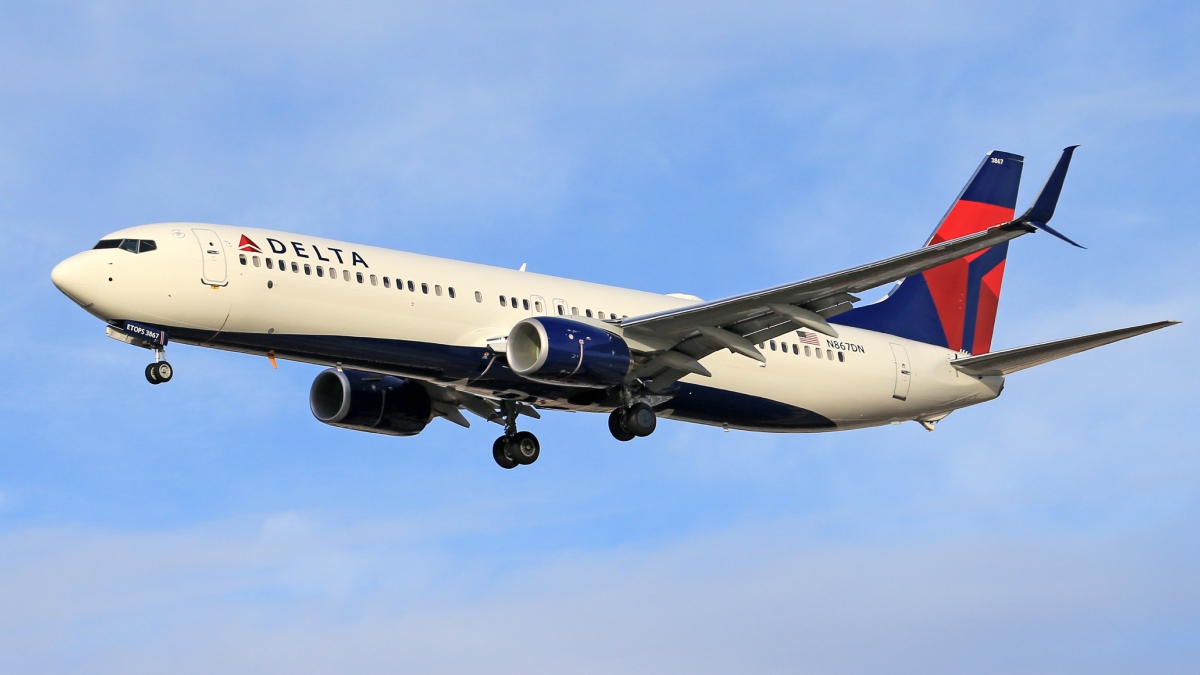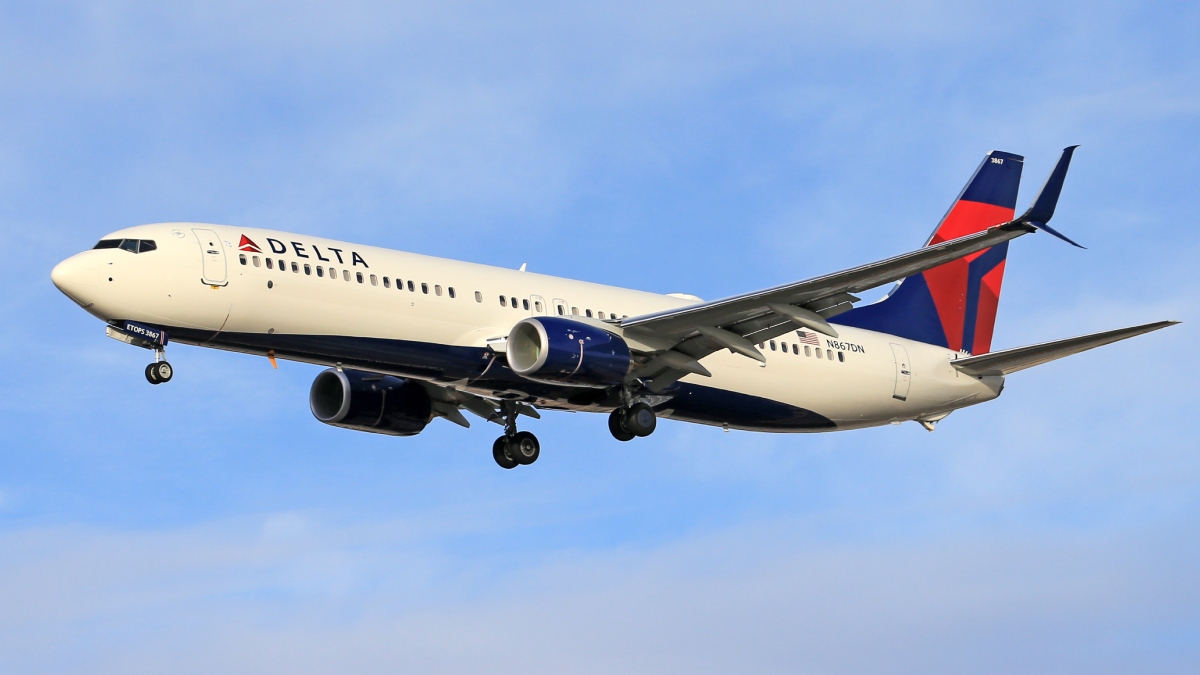Several crew members hospitalized after ‘severe’ turbulence on a flight highlights the hidden dangers of air travel. This incident underscores the unpredictable nature of atmospheric conditions and the importance of robust safety protocols for both passengers and crew. We’ll explore the severity of turbulence, airline safety procedures, passenger preparedness, aircraft design, post-incident investigations, and the psychological impact on those involved.
Understanding these aspects is crucial for improving air travel safety and mitigating future risks.
From understanding the different levels of turbulence and the types of injuries sustained to examining airline procedures and passenger safety measures, we’ll delve into the complexities of this event. We will also discuss the role of aircraft design, post-incident investigations, and the significant psychological impact on passengers and crew members. This comprehensive look will provide valuable insights into enhancing air travel safety.
Severity of Turbulence and Injuries

Air turbulence, a common occurrence in air travel, ranges in severity from mild bumps to intense, jarring events. Understanding the different levels of turbulence and the potential injuries associated with them is crucial for passenger and crew safety.
Turbulence Levels and Associated Injuries

Turbulence is categorized into several levels, each posing different risks. Light turbulence causes minor discomfort, while moderate turbulence can make it difficult to move around the cabin. Severe turbulence can cause significant injury, with passengers and crew being thrown around violently. Extreme turbulence is exceptionally rare but can result in catastrophic damage to the aircraft and serious injuries.
Common injuries sustained during severe turbulence include bruises, cuts, broken bones, head injuries, and whiplash. The severity of injuries depends on the intensity of the turbulence, the duration of the event, and the individual’s position within the aircraft.
Medical Interventions During and After Flight

Medical interventions for in-flight injuries range from basic first aid (such as treating minor cuts and bruises) to more complex procedures. In cases of severe injury, the flight crew may need to divert the aircraft to the nearest suitable airport for emergency medical attention. Onboard medical kits contain supplies for stabilizing injuries until professional medical help arrives. Post-flight, injured passengers and crew may require hospitalization for further treatment and observation.
Turbulence Severity and Injury Rates
| Turbulence Level | Injury Type | Frequency | Severity |
|---|---|---|---|
| Light | Minor bruising, discomfort | High | Low |
| Moderate | Bruises, minor cuts, sprains | Moderate | Low to Moderate |
| Severe | Broken bones, head injuries, severe bruising | Low | Moderate to High |
| Extreme | Serious injuries, fatalities, significant aircraft damage | Very Low | High |
Airline Safety Procedures and Protocols
Airlines have established comprehensive safety procedures to mitigate the risks associated with turbulence. These procedures cover pre-flight preparations, in-flight handling of turbulence, and post-incident investigations.
Standard Operating Procedures for Severe Turbulence
Standard operating procedures (SOPs) for handling severe turbulence include instructing passengers to remain seated with seatbelts fastened, securing loose items, and preparing for potential impact. Flight crews are trained to manage the aircraft through turbulent conditions and to assess and respond to injuries sustained by passengers and crew. Pilots use weather radar and other tools to avoid or minimize exposure to severe turbulence.
So, you heard about those crew members hospitalized after severe turbulence? It makes you think about stability, right? Things that seem solid, like the foundations of homes, can be shaky too, as you’ll see if you check out this news story about Homes under construction hang in balance as Bensons Property. The instability of those foundations is a pretty stark parallel to the unexpected jolts those air crew experienced.
Hopefully, everyone recovers quickly from their respective unsettling experiences.
Role of Flight Crew in Mitigating Turbulence-Related Injuries
The flight crew plays a critical role in mitigating turbulence-related injuries. Their responsibilities include informing passengers about the turbulence, ensuring that all passengers and crew are securely fastened, and providing immediate medical assistance to anyone injured. Post-incident, the crew assists with passenger care and prepares reports for the airline and regulatory bodies.
Importance of Pre-flight Safety Briefings
Pre-flight safety briefings are crucial for passenger preparedness. These briefings remind passengers of the importance of wearing seatbelts during taxiing, takeoff, landing, and anytime turbulence is encountered. They also Artikel procedures for responding to emergencies, including severe turbulence.
Flowchart for Airline Response to Severe Turbulence Incidents
A flowchart illustrating the steps taken by an airline after a severe turbulence incident would include steps such as immediate assessment of injuries, contacting emergency medical services, diverting the aircraft if necessary, conducting a post-incident investigation, providing support to injured passengers and crew, and filing reports with regulatory bodies.
Passenger Safety and Preparedness
Passenger preparedness is a key element in minimizing the risk of injury during turbulence. Understanding how to react to turbulence and following crew instructions can significantly improve safety.
Advice for Passengers During Turbulence
Passengers should always keep their seatbelts fastened during taxiing, takeoff, landing, and at any time the seatbelt sign is illuminated. They should remain seated and avoid moving around the cabin during turbulence. It’s advisable to stow away any loose items that could become projectiles.
Importance of Following Crew Instructions
Following crew instructions is paramount during turbulence. The crew is trained to handle such situations and their directions are designed to ensure passenger safety. Ignoring these instructions can increase the risk of injury.
Safety Measures to Minimize Injury Risk
Passengers can minimize their injury risk by remaining seated with their seatbelts fastened, avoiding sharp objects, and protecting their heads if possible. Keeping their hands and feet inside the cabin is also essential.
Dos and Don’ts During Severe Turbulence
- Do: Keep your seatbelt fastened, remain seated, follow crew instructions, protect your head.
- Don’t: Move around the cabin, stand up, drink hot beverages, use electronic devices that are not securely stowed.
Aircraft Design and Engineering Considerations
Aircraft design plays a significant role in minimizing the impact of turbulence on passengers. Advancements in engineering and technology are constantly improving passenger safety during turbulent conditions.
Role of Aircraft Design in Minimizing Turbulence Impact
Modern aircraft are designed with features that help to mitigate the effects of turbulence. These features include stronger airframes, improved flight control systems, and advanced materials that can better withstand stress. The aerodynamic design also contributes to stability and reduced susceptibility to turbulent airflow.
Engineering Solutions for Improved Passenger Safety
Engineering solutions aimed at improving passenger safety during turbulence include advanced flight control systems that automatically adjust the aircraft’s attitude to minimize the impact of turbulence, improved seat designs that provide better restraint, and the use of advanced materials in the aircraft’s structure to enhance its strength and durability.
Comparison of Aircraft Designs Regarding Turbulence Resistance
Different aircraft designs exhibit varying degrees of resistance to turbulence. Larger aircraft generally experience less violent movement during turbulence due to their greater mass and inertia. However, even larger aircraft can be affected by severe turbulence.
Advancements in Aircraft Technology for Improved Safety
| Technology | Benefit | Implementation | Effectiveness |
|---|---|---|---|
| Advanced Flight Control Systems | Automatic adjustment of aircraft attitude to minimize turbulence impact | Integrated into modern aircraft designs | High |
| Improved Seat Designs | Enhanced passenger restraint and protection | New aircraft models, retrofitting older aircraft | Moderate to High |
| Stronger Airframe Materials | Increased resistance to structural stress during turbulence | New aircraft construction | High |
Post-Incident Investigation and Response
Following incidents involving severe turbulence, thorough investigations are conducted to determine the cause of the event and identify any safety improvements that can be made.
Procedures for Investigating Severe Turbulence Incidents
Investigations typically involve reviewing flight data recorders, interviewing pilots and crew, examining the aircraft for damage, and analyzing weather data. The goal is to understand the factors that contributed to the incident and to prevent similar events from occurring in the future.
Seriously rough air can really mess things up; several crew members were hospitalized after severe turbulence on their flight. It reminds me of how some people feel about unfair calls in sports, like the Adelaide Strikers’ anger after reading about this controversial umpire decision, check it out: Strikers fume after on-field umpire helps Hobart Hurricanes avoid a.
Hopefully, those hospitalized crew members recover quickly – that kind of turbulence is a serious ordeal.
Role of Regulatory Bodies in Reviewing Incidents
Regulatory bodies such as the FAA (in the United States) and EASA (in Europe) play a critical role in reviewing severe turbulence incidents. They investigate the incidents, issue safety recommendations, and enforce regulations to ensure airline compliance with safety standards.
Measures to Prevent Similar Incidents
Measures to prevent similar incidents can include improved weather forecasting and reporting, enhanced pilot training on turbulence avoidance techniques, and modifications to aircraft design or operational procedures based on the findings of the investigation.
Providing Support to Injured Passengers and Crew
Airlines typically provide support to injured passengers and crew members, including medical care, compensation for injuries, and counseling services to address any psychological trauma.
The Psychological Impact on Passengers and Crew: Several Crew Members Hospitalized After ‘severe’ Turbulence On
Experiencing severe turbulence can have significant psychological effects on both passengers and crew members. Understanding these effects and providing appropriate support is crucial for recovery.
Psychological Effects of Severe Turbulence
Passengers and crew may experience anxiety, fear, post-traumatic stress disorder (PTSD), and other psychological conditions following severe turbulence. The severity of the psychological impact can vary depending on the individual’s pre-existing mental health, the intensity of the turbulence, and the extent of any injuries sustained.
Coping Mechanisms for Post-Incident Trauma
Coping mechanisms may include talking to friends and family, seeking professional counseling, engaging in relaxation techniques, and avoiding air travel temporarily. Support groups can also provide a valuable sense of community and shared experience.
Crazy weather’s been causing havoc lately! Several crew members were hospitalized after severe turbulence on their flight, highlighting the unpredictable nature of air travel. This reminds me of a completely different kind of emergency: check out this news story about a rescue team ending their search for a man overboard from a Norwegian cruise ship – Rescue team ends search for a man overboard from Norwegian – it’s a stark reminder that even seemingly calm journeys can turn dangerous in a flash.
Hopefully, those hospitalized after the turbulence will recover quickly.
Resources for Passengers and Crew Dealing with Trauma
Various resources are available to help passengers and crew cope with trauma after a turbulence incident. These resources may include mental health professionals, support groups, and online resources that provide information and support.
Strategies for Managing Stress and Anxiety Related to Air Travel
- Practice relaxation techniques such as deep breathing or meditation.
- Engage in distracting activities during the flight.
- Talk to a therapist or counselor about your fears.
- Consider seeking professional help if your anxiety is severe.
Illustrative Scenario
Imagine a transatlantic flight encountering unexpected severe clear-air turbulence over the Atlantic Ocean. The aircraft experiences a sudden, violent drop, lasting approximately 30 seconds. Passengers are thrown around, striking overhead compartments and seats. Several passengers sustain minor injuries such as bruises and cuts, while two passengers experience more serious injuries, including a broken arm and a head injury requiring stitches.
Crew members also sustain minor injuries, including bruises and whiplash.
Sequence of Events, Several crew members hospitalized after ‘severe’ turbulence on
The sequence of events would include the initial encounter with turbulence, the sudden and violent movement of the aircraft, the immediate response of the crew (fastening seatbelts, instructing passengers to remain seated, providing first aid), the assessment of injuries, the decision to divert to the nearest airport, and the emergency landing and subsequent medical care for the injured.
Injuries and Medical Treatment
The injuries sustained range from minor bruises and cuts to a broken arm and a head injury. Onboard medical assistance is provided, and upon landing, emergency medical services transport the injured passengers and crew to a local hospital for further evaluation and treatment.
Emotional Responses
Passengers experience a range of emotions, from fear and panic during the event to relief and gratitude after landing. Some passengers may experience lingering anxiety and fear of flying. Crew members also experience stress and anxiety, along with the responsibility of managing the emergency and providing care for the injured passengers.
Summary
The hospitalization of several crew members after severe turbulence serves as a stark reminder of the inherent risks in air travel. While advancements in aircraft design and safety protocols aim to minimize these risks, unpredictable events like severe turbulence remain a concern. By understanding the severity of injuries, airline response procedures, passenger preparedness strategies, and the psychological impact on those involved, we can collectively work towards a safer future for air travel.
Continued research, improved safety measures, and increased passenger awareness are key to mitigating the potential for similar incidents.
Question Bank
What causes severe turbulence?
Severe turbulence is often caused by unpredictable weather patterns like thunderstorms, jet streams, and clear-air turbulence (CAT).
How common are injuries from turbulence?
Injuries from turbulence are relatively rare, but severe incidents can result in serious harm.
What should I do if I experience turbulence?
Follow the crew’s instructions, remain seated with your seatbelt fastened, and brace yourself if necessary.
What kind of compensation can I expect if injured during turbulence?
Compensation depends on the severity of the injury and the airline’s policies; consult with legal counsel if necessary.
Are there any specific seat locations safer during turbulence?
There’s no definitive answer; however, seats over the wings are generally considered less affected by turbulence.
